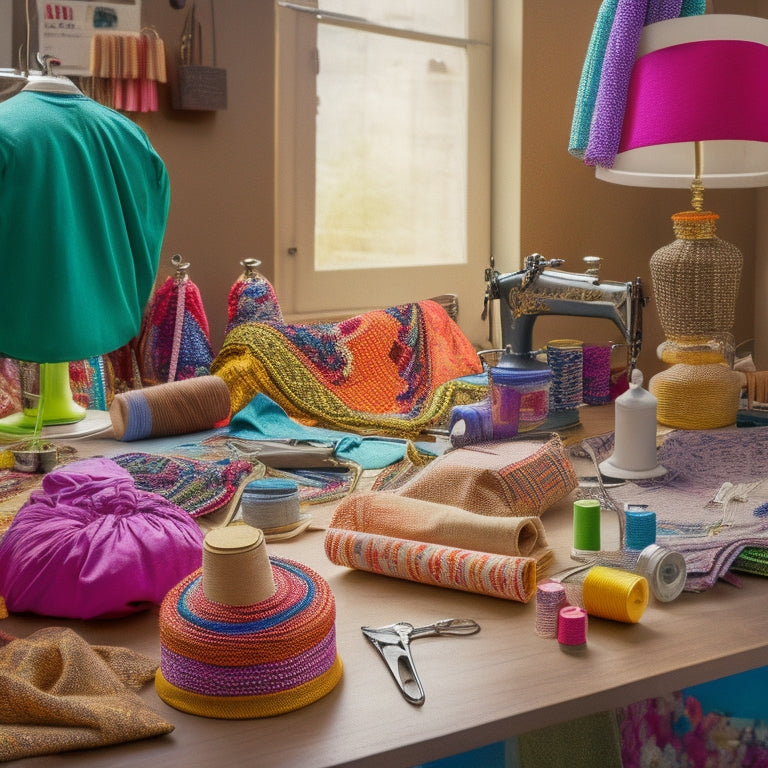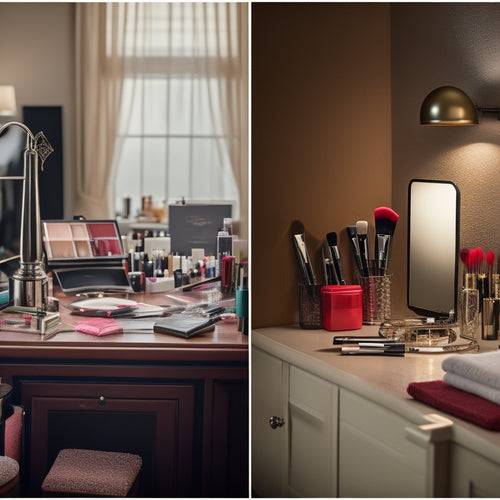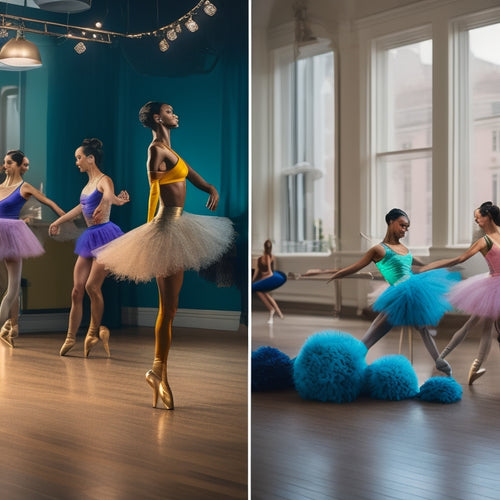
3 Essential Tools for Dance Costume Design Mastery
Share
You're about to transform your dance costume designs with three essential tools that will take your creations from ordinary to breathtaking. First, master digital fabric rendering to visualize the drape, texture, and movement of fabrics, refining your designs with precision. Next, create mood boards to establish a cohesive color palette and reflect the mood and atmosphere of the performance. Finally, bring your designs to life by experimenting with fabric manipulation techniques and selecting fabrics that complement the dancer's skin tone. As you explore these tools, discover how to turn your vision into a mesmerizing spectacle that will leave the audience in awe - and that's just the beginning.
Key Takeaways
• Master digital fabric rendering to visualize drape, texture, and movement with precision and accuracy.
• Utilize digital tools for fabric manipulation, including draping and folding, to achieve intricate designs.
• Create mood boards to communicate your vision effectively, showcasing color palette, fabric textures, and inspirational images.
• Experiment with fabric manipulation techniques, such as draping, gathering, and layering, to create texture and volume.
• Develop a harmonious color palette that sets the tone for the performance and combines fabric textures and colors for a cohesive look.
Mastering Digital Fabric Rendering
By diving into the world of digital fabric rendering, you can breathe life into your dance costume designs, accurately visualizing the drape, texture, and movement of fabrics before ever cutting a physical bolt. This digital domain allows you to experiment with various textures, exploring the intricate details of fabrics, from the softness of silk to the stiffness of tulle. Through texture exploration, you can create authentic digital fabrics that mimic the real thing, giving you a true sense of how your design will look and move on stage.
Fabric manipulation is also a key aspect of digital fabric rendering. By mastering digital tools, you can drape, fold, and pleat fabrics with ease, creating intricate designs that would be impossible to achieve by hand. This level of precision allows you to refine your designs, making adjustments on the fly and perfecting the fit, flow, and overall aesthetic of your costume.
With digital fabric rendering, the possibilities are endless, and your dance costume designs will come alive in ways you never thought possible.
Costume Design Visualization Essentials
With your digital fabrics perfected, you're ready to bring your costume design to life, and that means visualizing the entire look, from the dancers' movements to the lighting and stage settings.
As a costume designer, it's crucial to create a clear visual representation of your design concept. This is where mood boards come in – a visual tool that helps you communicate your vision to the production team. Create a board that showcases your color palette, fabric textures, and inspirational images. This will guarantee everyone is on the same page, establishing a cohesive and stunning final product.
To create a cohesive look, develop a color palette that reflects the mood and atmosphere of the dance performance. Select a range of colors that complement your fabrics and evoke the desired emotions. You can use online color palette generators or create a physical board with swatches and paint chips.
By defining your color palette, you'll establish a sense of harmony throughout the costume design, setting the tone for a breathtaking performance.
Bringing Designs to Life
As you breathe life into your design, the fusion of fabric, color, and movement transforms your vision into a mesmerizing spectacle, ready to captivate the audience.
With a clear design concept in mind, you're now ready to bring your costume to life. Fabric manipulation becomes an essential aspect of this process. You'll experiment with draping, gathering, and layering techniques to create texture, volume, and movement.
Texture exploration is vital, as you'll select fabrics that not only complement the dancer's skin tone but also evoke the desired emotions. You might choose flowing chiffon for an ethereal effect or structured tulle for a more dramatic look.
By expertly combining fabrics, you'll create a visually stunning costume that accentuates the dancer's movements. As you work, remember that every fold, every drape, and every texture contributes to the overall aesthetic.
Your attention to detail will pay off when the lights hit the stage, and your design takes center stage.
Frequently Asked Questions
What Software Is Best for Creating Custom Dance Costume Patterns?
When creating custom dance costume patterns, you'll find that digital drafting software like OptiTex or TUKAcad is ideal, offering precise Fashion CAD capabilities to bring your designs to life with accuracy and efficiency.
Can I Use 3D Modeling for Costume Design Without Prior Experience?
'You can definitely use 3D modeling for costume design without prior experience, but be prepared for a learning curve. With patience, you'll gain access to design freedom, creating intricate, bespoke pieces that bring your creative vision to life.'
How Do I Ensure Accurate Body Measurements for Custom Costumes?
To guarantee accurate body measurements for custom costumes, you'll want to master measuring techniques, avoiding common mistakes like incorrect posture, loose or tight measurements, and inconsistent units, to create a flawless fit for your clients.
What Are the Most Essential Fabric Types for Dance Costumes?
"As you weave together the perfect costume, imagine threads of possibility unfolding like a tapestry. When it comes to fabric selection, you'll want to explore textures that shimmer, flow, and stretch with the dancer's every move, from lustrous silks to supple spandex."
Can I Use Ai-Generated Designs for Professional Dance Costumes?
You wonder if AI-generated designs are suitable for pro dance costumes. While AI ethics are essential, Virtual try-on tech can enhance your design process, but human touch is still needed to guarantee costumes meet performers' needs and your artistic vision.
Related Posts
-

3 Pro Tips to Overcome Makeup Task Procrastination
You're stuck in a never-ending cycle of makeup task procrastination, feeling overwhelmed by the complexity of the tas...
-

Best Dance Footwear for Comfort and Performance
When selecting the best dance footwear for comfort and performance, prioritize shoes with exceptional arch support an...
-

Stellar Gifts for Creative Minds and Stargazers
Celestial-inspired gifts and creative tools can reveal the full potential of stargazers and imaginative minds, provid...


